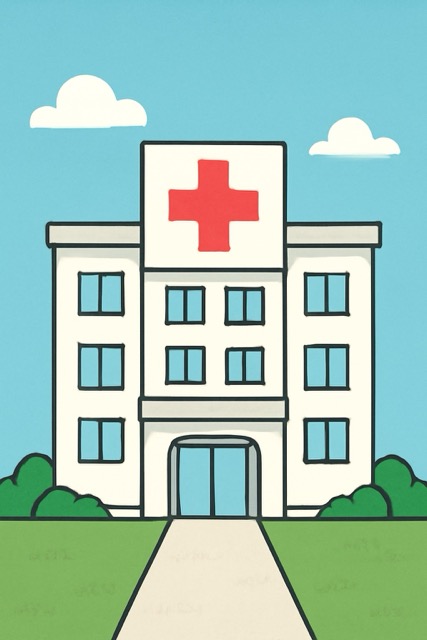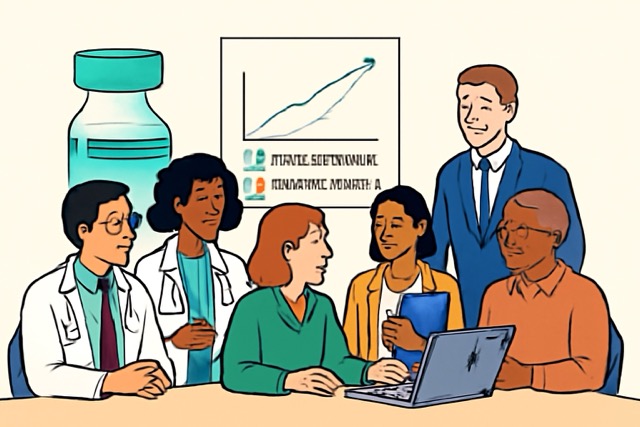3. How to Build a Pharma Gross-to-Net (GTN) Waterfall
Ever look at your paycheck? There’s the big “gross pay” number, and then the much smaller “net pay” that actually hits your bank account. The gap is filled with taxes, insurance, and other deductions. A pharma company’s revenue works the same way. This workshop is about that gap.
(This is the third post in our Pharma Deep Dive series. We’ve covered the money flow and the gatekeepers; now we build the model.)
The Gross-to-Net (GTN) waterfall is a financial bridge showing every discount, rebate, and fee that turns a drug’s high list price into the lower net revenue a company actually books. The US waterfall is a complex beast of varied deductions you must model separately, while the EU’s is simpler, often dominated by government-mandated rebates.
What is a GTN Waterfall? (And Why It’s Not Just for Accountants)
A GTN waterfall is the story of a drug’s price. It starts at the top with the optimistic Gross Sales (Total Pills Sold × List Price) and subtracts every deduction along the way to arrive at the reality of Net Sales—the number that actually shows up on a company’s income statement.
For an investor, this isn’t just an accounting exercise. The GTN waterfall is a strategic X-ray of a drug’s commercial health. It tells you exactly how much pricing power the company has, how dependent it is on government channels, and how much value it’s giving away to middlemen. A “GTN bubble” that grows from 45% to 55% over two years tells you more about pricing pressure than a dozen press releases.
Let’s build two simplified templates: one for the more straightforward European model and one for the American beast.
The EU5 Waterfall: A More Orderly Process
In Europe’s “Top 5” markets (Germany, France, Italy, Spain, UK), the price journey is usually more predictable. The starting point isn’t a commercially-set list price but the Ex-Factory Price—the official price at which the drug leaves the manufacturer’s factory, often after HTA negotiations we discussed previously.
The deductions are fewer and often mandated by law.
- Statutory Rebates: Governments are the primary payers, and they demand their cut. In Germany, for example, the AMNOG process results in a negotiated rebate. France has similar volume-based rebates. These are non-negotiable costs of doing business.
- Wholesaler & Pharmacy Fees: Standard, predictable fees for the service of distributing the drug.
- Clawbacks & Other Levies: Some countries have healthcare budget caps. If a nation’s total drug spend exceeds the budget, companies may have to “claw back” a portion of their revenue to the government.
The EU5 GTN Template: It’s a clean, simple structure.
- Gross Sales (Units Sold × Ex-Factory Price)
- Less: Statutory Rebates
- Less: Wholesaler & Pharmacy Discounts
- Less: Clawbacks / Health Levies
- = Net Sales
The EU waterfall is like a standardized tax form. The categories are known, and the rates, while painful, are often predictable.
The US Waterfall: A Beast of a Thousand Cuts
Welcome back to the wild west. The US GTN waterfall starts with the Wholesale Acquisition Cost (WAC), or list price. The deductions are numerous, complex, and commercially negotiated, creating a much larger and more volatile gap between gross and net.
Here are the big buckets you absolutely have to model:
- PBM Rebates (Commercial): The biggest deduction. As we’ve covered, this is the money paid to PBMs like Express Scripts in exchange for favorable formulary placement for patients with commercial insurance.
- Medicare Part D Rebates: Similar to commercial rebates, but paid to government-sponsored prescription drug plans for seniors. It also includes a mandatory discount to help “close the donut hole” (a gap in coverage).
- Medicaid Rebates: This is a monster. By law, a drugmaker must give Medicaid the lowest price it offers any private buyer (the “Best Price”) or a minimum of 23.1% off the average price, whichever is greater. For many innovative drugs, this is the steepest discount.
- 340B Program Discounts: An ever-growing deduction. The 340B program requires manufacturers to provide Medicaid-level discounts to hospitals and clinics that serve a high number of uninsured and low-income patients. These 340B hospitals can then be reimbursed by commercial insurers at a much higher rate, pocketing the difference.
- Chargebacks & Fees: Fees paid to wholesalers like McKesson for distribution and for managing the complex pricing of 340B and other government contracts.
- Patient Co-pay Assistance: Money the manufacturer spends on coupons and programs to help patients afford their co-pays (which are often based on the high list price).
The US GTN Template (+ A Real-World Example)
Let’s move from hypothetical to a real-world case study. While companies don’t publish a detailed GTN waterfall for every drug, we can make up some numbers for this example.
Assume that in its 2023 10-K report, Merck disclosed that its overall U.S. Gross-to-Net adjustment was approximately 52.8%. This means for every dollar of gross revenue at list price, more than 52 cents was given back in the form of rebates and discounts. That’s the real-world haircut.
Let’s use that percentage to model a blockbuster like their cancer drug, Keytruda.
Scenario: Let’s assume a hypothetical $10 billion in US Gross Sales for Keytruda at its WAC/list price. We know the Net Sales figure needs to be roughly $4.72 billion to reflect the 52.8% GTN adjustment.
Our model now becomes a puzzle: How can we plausibly allocate the massive $5.28 billion in deductions? The following is an illustrative breakdown based on a typical oncology drug’s exposure to different channels.
1. Gross Sales (at WAC): $10,000M
Less: Deductions
- Commercial PBM & Medicare Part B Rebates: Oncology drugs like Keytruda are often administered by physicians (Part B), where rebates are common. This is the largest bucket. Let’s allocate -$2,800M.
- Medicaid Rebates: State Medicaid programs must cover innovative cancer drugs, but they get steep rebates in return. Let’s estimate -$980M.
- 340B Program Discounts: A significant and growing deduction as more hospitals qualify for the program. Let’s allocate -$1,100M.
- Chargebacks, Distribution Fees & Other: This includes fees to wholesalers and patient assistance programs. Let’s allocate -$400M.
Total Deductions: $2,800 + $980 + $1,100 + $400 = $5,280M
2. Net Sales: $10,000M (Gross) – $5,280M (Deductions) = $4,720M
(GTN % = $5,280M / $10,000M = 52.8%)
This example shows that more than half of Keytruda’s list price is likely given away to secure access for patients. The exact numbers in each bucket are proprietary to Merck, help us visualize where the rebates may go in real life.
What to Watch
- GTN Percentage Trend: In their quarterly filings, listen for how companies like Amgen or Gilead describe their GTN adjustments. Is the percentage stable, or is it growing? A growing percentage means pricing pressure is intensifying.
- Channel Mix Exposure: Look for disclosures on the percentage of business going through high-rebate channels like Medicaid and 340B. A surprise shift in channel mix can crush net sales even if prescription volume is strong.
- Legislative Risk: Pay close attention to policy debates around the 340B program, Medicaid Best Price rules, or the Inflation Reduction Act’s negotiation powers. These can fundamentally alter the GTN waterfall overnight.
Management “Code Words”: When an executive on an earnings call mentions “unfavorable pricing,” “channel mix shifts,” or “higher rebates to secure access,” they are all talking about pressure on the GTN line.
This framework is a starting point. When you analyze a company, the real work is digging through the 10-K to find the clues that help you populate this model. What GTN drivers do you find most difficult to forecast?
Views are my own. Educational market commentary & research notes. Not investment advice; no client relationship. I may hold positions I discuss.






